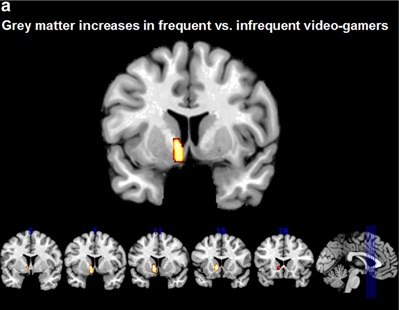Frequent gamers have different brains - Study
Study finds that brains of teenagers who frequently play games tend to have larger, more productive region associated with rewarding sensations.
Researchers have found a correlation between frequent gaming and the size of the brain region responsible for rewarding feelings. A recent study performed at Ghent University in Belgium and published this week in the journal Translational Psychiatry found that frequent gamers--similar to pathological gamblers--were found to have larger left ventral striatum, the brain's reward center that deals with dopamine dispersal.

Researchers used functional magnetic resonance imaging (fMRI) machines to monitor brain activity of frequent and non-frequent teenage gamers during various reaction-testing experiments. Results revealed that frequent gamers, in addition to having larger ventral striatum, showed more brain activity when they were losing than that of infrequent gamers.
The study could not determine how the increased ventral striatal volume of frequent gamers was related to frequent gaming. It's possible that gaming causes the change in ventral striatal volume or that those with higher striatal volume are predisposed to derive more pleasure from gaming, and thus are inclined to play more. The study also indicates that although the concept of pathological gaming was not considered, volumetric differences in the ventral striatum have previously been linked to other pathological activities, such as drug addiction and gambling.
The researchers state that although changes in brain structure have been observed in drug addicted subjects in the past, gaming may pose a good option for measuring the impact of addiction on the brain's structure without the wildcard of neurotoxic substances.
The study was conducted with a pool of 154 healthy 14-year-old teens from Berlin divided into groups of frequent (76) and non-frequent (78) gamers. Frequent and non-frequent gamers were defined as playing more or less than nine hours a week.
Got a news tip or want to contact us directly? Email news@gamespot.com
Join the conversation